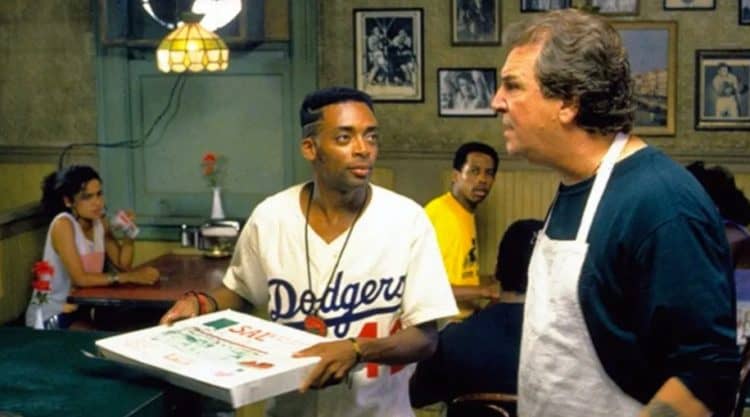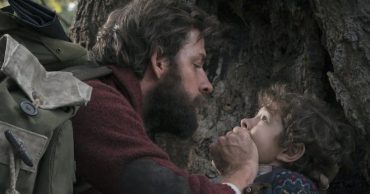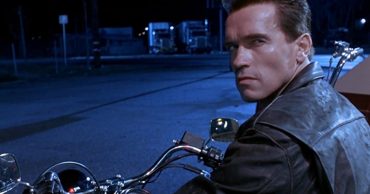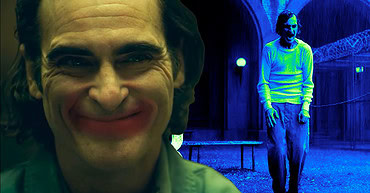
It has been 30 years since the cultural tensions illustrated in a Bed-Stuy neighborhood on a hot summer day culminated into a cataclysmic brawl at “Sal’s Famous”. Yes, Spike Lee’s Do the Right Thing is celebrating its 30th anniversary, and rightfully so. Three decades after the completion of the Lee masterpiece, the film is still justly recognized for its impact and as the social phenomenon that it was but it is easy to overlook the industrial achievements associated with Do the Right Thing. The scope of Lee’s genius is unquestioned and is too copious to detail. However, with the benefit of 30 years of reflection, there are a few technical elements that particularly cement the brilliance of the 1989 tour de force.
With Do the Right Thing, Lee was able to create a societal awakening through immensely interesting characters set in one neighborhood over the course of one day. There are so many colorful characters and interconnected story lines that one may often lose track of the time frame. The narrative however never feels fragmented. This is a credit to the films mastery of editing. As Lee tells the tale of intertwining characters, seamless transitions are constantly employed to create the element of cohesion within the narrative. The film also beautifully uses the editing technique known as the “match on cut” to establish and maintain the relationships between characters. Lee even implements the use of montage to emphasize ethnic differences and highlight cultural stereotypes as a way to illuminate the picture’s underlying conflict of racial divide. A credit to Lee’s and editor Barry Alexander Brown’s abilities, the montage serves to advance the story instead of impeding it. As a result, Lee skillfully and continuously builds tensions of all types until the culmination of circumstances erupts to signify true life cultural discourse. So many years after its release, Do the Right Thing is still a master class in the process of the cultivation of anxiety. Technically speaking, one way that Lee was particularly effective in manufacturing tension was his use of Dutch angles throughout the course of the film.
The Dutch angle is a kind of camera view that is tilted to emphasize vertical lines at one side of the frame. When executed correctly and not overused, this technique disrupts the narrative just enough to disturb the sync of the action. Hitchcock was a master at utilizing the Dutch angle but Lee uses it just as effectively. With his use of Dutch angles in Do the Right Thing a generation ago, Spike Lee would influence a generation of filmmakers to employ the same practice.
One scene that acutely illustrates Lee’s mastery of Dutch angles is the confrontation scene at Sal’s at the end of the film. As Radio Raheem and Buggin’ Out burst through the pizzeria doors and incite the film defining altercation, Dutch angles are implemented extensively as rotating reaction shots and medium long shots encapsulate the quarrel. This particularly powerful sequence is flawlessly arranged, radiantly composed and beautifully executed. The influence of Lee’s use of Dutch angels can be easily spotted in the decades since Do the Right Thing. Easy examples include the Mission: Impossible films and the latest Marvel franchise pictures, chiefly the Thor films.
Another feature of Do the Right Thing that has appreciated with age since the film’s 1989 debut is the arrangement of composition. Ernest Dickerson’s cinematography is simply all encompassing and deliriously gorgeous. The film even evokes influence of film noir due to its use of compositional lines. For example, consider the lines composed by the steps often found behind DA Mayor. The color red is also prominently featured in the film because Lee wanted to emphasize the effect that the heat was placing upon the narrative. During the writing of the script, Lee’s working title for the project was actually Heat Wave. Dickerson’s cinematography can be aggregated with the unpretentious crane shot at the beginning of the narrative proper. The shot consists of Mister Senor Love Daddy and advances, via panning, to the confines of the neighborhood. This establishing shot is genius in its simplicity and effectiveness.
In an interview for Entertainment Weekly regarding the 25th anniversary of Do the Right Thing, Spike Lee could not help but proclaim his disdain for his film’s lack of critical acclaim. “Let me ask you a question” Lee challenged, “What won best picture that year? Driving Miss Mother F—–g Daisy! Who is watching that film today? Who is even thinking about that film? Driving Miss Daisy is not being studied in universities and colleges around the world”! 30 years after Lee completed his magnum opus, it is clear that the discussion and debate that the film facilitates are not the only reasons why it continues to be studied. Do the Right Thing embodies the epitome of cinematic technical brilliance every bit as it illuminates the societal racial conscience.
 Follow Us
Follow Us





